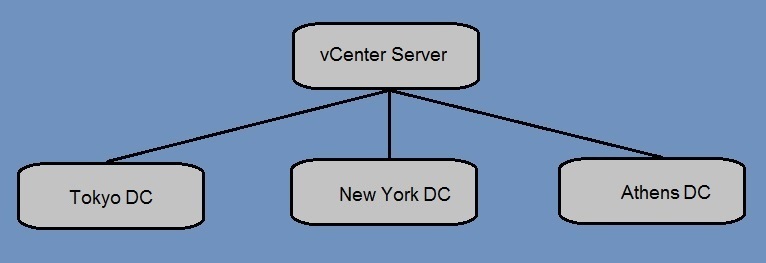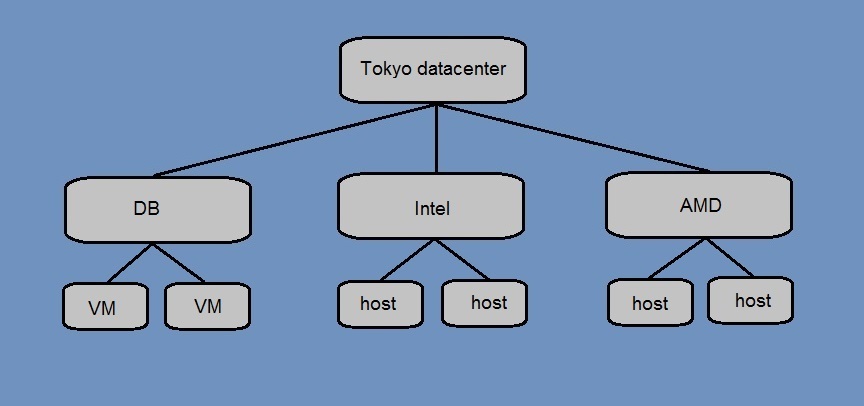vCenter Server inventory explained
The vCenter Server inventory is a hierarchy of objects. The objects are either containers of other objects, such as folders, or objects that you manage, such as ESXi hosts, virtual machines, templates, clusters, networks, resource pools… The inventory helps you organize your objects in a meaningful way.
In order to use advanced vSphere features (such as High Availability or Fault Tolerance) you must add ESXi hosts to the vCenter Server inventory. Prior to adding an ESXi host to the vCenter Server inventory you must create at least one datacenter object. Some companies might even use more than one datacenter objects to represent organizations or business units in the company. Each datacenter object can have its own set of hosts, virtual machines, templates, and other objects.
Here is an example of datacenter objects based on their geographical location:
Each location might have its own team of vSphere administrators, its own customers, and its own set of hosts, virtual machines, networks and other objects. Note that the interaction across datacenters is limited, For example, you can migrate a virtual machine using vSphere vMotion from one host to another in the same datacenter, but not to a host in a different data center.
Items in a data center can be placed into folders to better organize the system. For example, you can place virtual machines in folders that are based on function and ESXi hosts in folders based on the CPU family:





